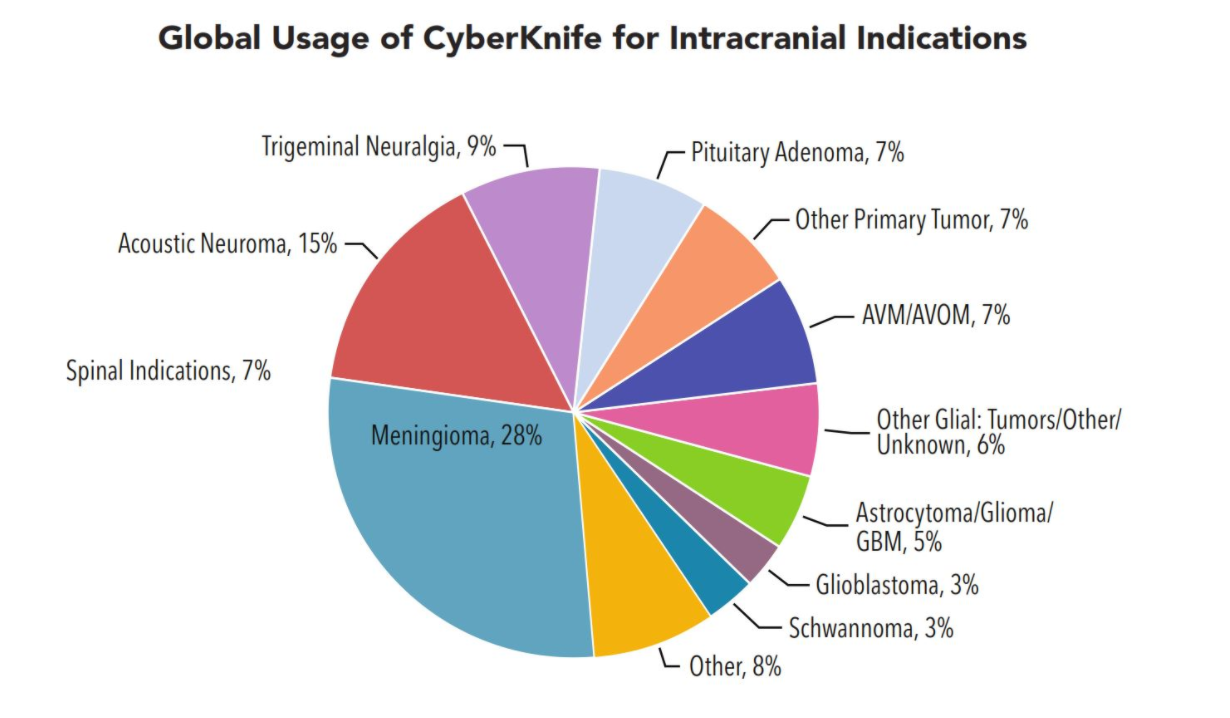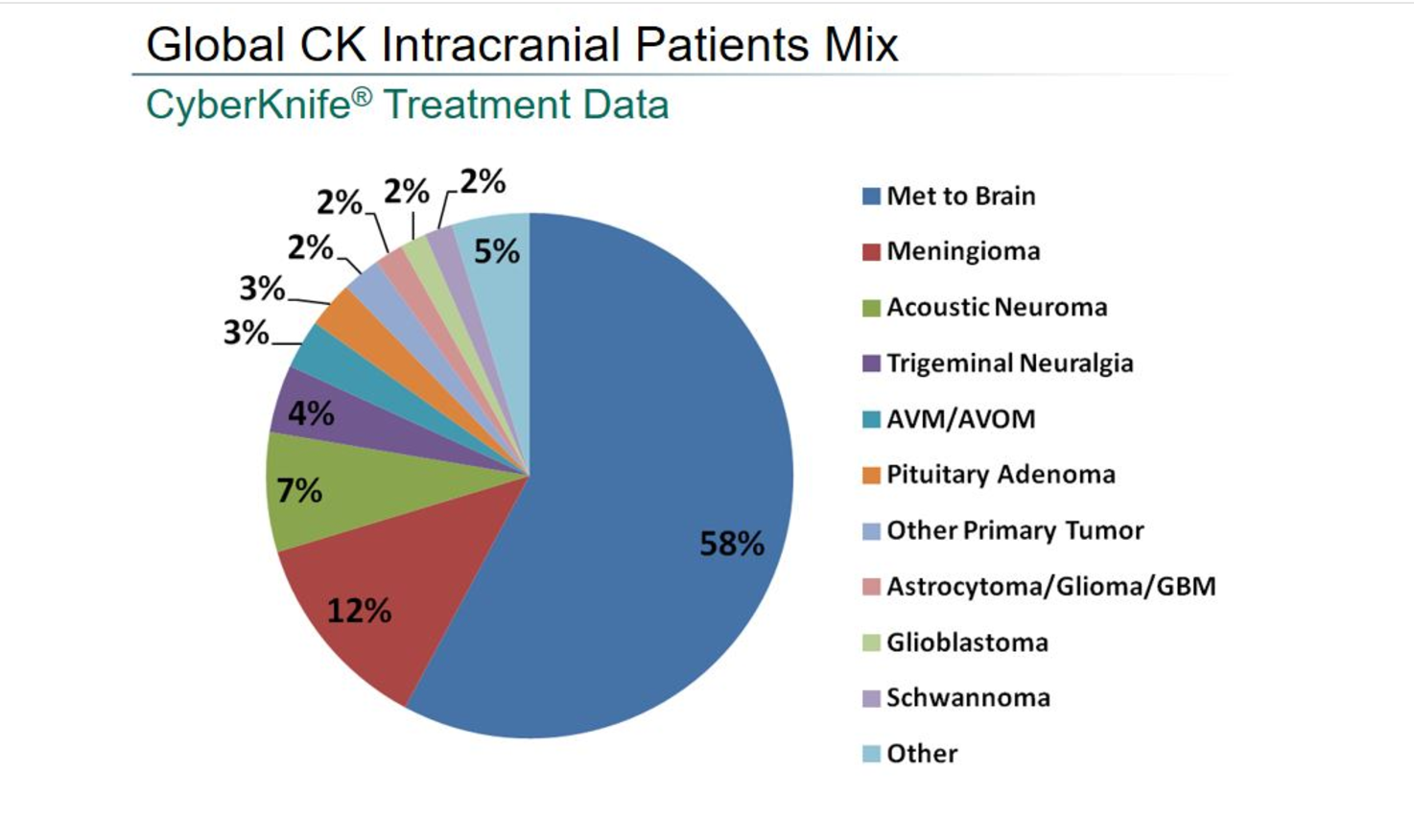If you or a loved one are diagnosed with brain cancer, learning as much as you can about the specific types and treatment options will help empower you to make the best decisions for your treatment. The cancer experts at Alaska CyberKnife Center at Providence Cancer Center are here to help.
With more than 120 different types of brain tumors, our board certified radiation oncologists can make sense of your particular tumor type and discuss the variety of treatment options available to you.
BRAIN TUMOR GRADES
Most types of cancers are categorized by “stages” of cancer which can identify the size, if lymph nodes are involved or if the cancer has metastasized (spread) to other parts of the body. Brain tumors are different because they rarely spread outside the brain. For that reason, doctors use “grades” to talk about the aggressiveness of the tumor. They can determine this by looking at the cancerous cells under a microscope. Tumors that are graded higher usually grow faster and are more likely to be malignant. The grades and their descriptions are:
- Grade I – The tumor is benign. The cells look nearly like normal brain cells. This grade is the least aggressive.
- Grade II – The tumor is malignant. The cells look less normal but they, generally, are slow growing cells
- Grade III – The malignant tissue has cells that look very different from normal cells. The abnormal cells are actively growing (anaplastic).
- Grade IV – The malignant tissue has cells that look most abnormal and tend to grow quickly.
BRAIN TUMOR TYPES
Brain tumors are usually split into two general categories – primary and secondary. Brain tumors may have travelled (metastasized) into your brain from another organ, such as the lungs, breast, or colon and are called secondary tumors. Or, you may have a primary brain tumor which originated from one of the many different types of cells inside your brain.

TYPES OF PRIMARY BRAIN TUMORS WITH COMMON TREATMENTS
Primary brain tumors are usually named after the cell or the part of the brain from which they originate. These tumors may be benign (non-cancerous) or malignant. But even the benign tumors can be life-threatening if not removed as they can push on sensitive nerves and cause problems with the normal functions of your brain. Benign tumors are often removed with surgery and don’t reappear. Malignant brain tumors don’t usually travel to other parts of the body, but they can grow quickly and be quite a risk to your life. Here are the most common types of primary brain tumors our Alaska CyberKnife Center doctors see:
- Astrocytoma – This type of tumor emerges from star-shaped glial cells called astrocytes and most often occurs in the cerebrum. Astrocytoma tumors do not usually spread outside the brain or spinal cord and usually will not affect other organs. Astrocytomas are the most common glioma and often have clearly defined outlines on diagnostic images. They sometimes have diffuse zones of infiltration (e.g. low-grade astrocytoma, anaplastic astrocytoma, glioblastoma) that can arise in any location in the central nervous system (CNS), but they can have a tendency to progress to more advanced grades
- Glioblastoma Multiforme (GBM) – The most common and deadliest form of astrocytoma. Primary GBM grows and can spread to other parts of the brain. They can become very large before symptoms occur, which often begin abruptly with seizures. Surgical removal is the mainstay of treatment for this type of aggressive tumor if it can be done without unacceptable neurologic injury. Since GBM is extremely infiltrative, complete surgical removal is impossible. Radiation therapy and stereotactic radiosurgery are usually used in addition to surgery and can double the median survival of patients compared to supportive care alone.
- Meningioma – A tumor arises in the meninges, which are three thin layers of tissue surrounding the brain and spinal cord. This type of tumor is usually benign, but can be malignant and generally is a slow growing tumor. Meningiomas can happen at any age, even to children, but most frequently arise in women over the age of 50. Meningiomas may not require immediate treatment and can be observed with MRI scans. If the patient has symptoms or the tumor is in a critical area, treatment is usually recommended. Patients are often treated with surgery, stereotactic radiosurgery and radiation therapy.
- Oligodendroglioma – This is a rare, slow-growing tumor that occurs in the cells that make up the fatty substance that covers and protects nerve cells in the brain and spinal cord. It is sometimes referred to as an oligodendroglial tumor. Oligodendroglioma can occur in adults and children, and the average age of diagnosis is 35. These tumors are often treated with surgery, radiation therapy, stereotactic radiosurgery and will often respond well to chemotherapy as well.
- Acoustic Neuroma (Vestibular Schwannoma) – A slow growing and almost always benign tumor that arises from the cells that cover the vestibulocochlear nerve. This tumor has symptoms of hearing loss, balance problems, or ringing in the ears (tinnitus). The tumor is located on the nerve connected to the hearing. While removal by surgery has great tumor control rates, it can lead to hearing loss, facial numbness, or facial weakness. Multiple studies show outstanding tumor control rates with stereotactic radiosurgery with a far reduced risk of side effects.
- Paraganglioma (Glomus Jugularis or chemodectomas) – These tumors are rare, most often benign tumors most commonly affecting the base of skull and neck region. These tumors are often treated with surgical resection, radiation therapy, or stereotactic radiosurgery.
- Medulloblastoma – While this tumor can be seen in adults it is often in diagnosed in children and teenagers and is the most common malignant brain tumor in childhood. Disease can often times involve the spinal cord, therefore treatment is often directed to the brain and spinal cord. Although less frequent, this tumor can spread throughout the body. This tumor is often treated with a combination of surgery, radiation, and chemotherapy and less often stereotactic radiosurgery.
- Ependymoma – This tumor forms from cells lining the ependymal lining of ventricular system of the brain and spinal cord. This tumor is also often seen in children. Surgery is often followed by radiation or stereotactic radiosurgery.
- Pituitary Adenoma – These tumors are almost always benign. The pituitary is located in the sella turcica which is near the optic nerve and optic chiasm. Tumors that progress in this location can lead to loss of vision. These tumors can make hormones in excess that can lead to symptoms. In many instances these tumors may not require treatment and in some instances can be treated with medication. Often times patients will require surgery, radiation therapy, stereotactic radiosurgery or a combination of treatments.
- Central Neurocytoma – These tumors are rare and most commonly behave as benign tumors. They are often found in young adults but can be seen in children and the elderly. They usually form in the brain cavities and often result in swelling of the brain. Most patients will be treated with surgery and radiation therapy or stereotactic radiosurgery.
TYPES OF SECONDARY BRAIN METASTASES
- Lung Cancer Metastases – Cancer that metastasizes to the brain most often originates in the lungs for both men and women.
- Breast Cancer Metastases – This is the second most common type of brain metastases in women. These brain tumors often don’t show for a few years after the breast cancer is found, but can appear even five or ten years following original breast cancer treatment.
- Melanoma Metastases – For men, these are the second most common type of brain metastases and they can metastasize to the brain or the meninges (the covering of the brain and spinal cord). These tumors usually occur several years after the primary melanoma and in multiples. Because these tumors have many blood vessels, they are at risk of bleeding.
- Colon/Colorectal Metastases – With colon or colorectal cancer, a single tumor tends to metastasize a few years after the first tumor is diagnosed.
- Kidney/Renal Metastases – Like the colon cancer, this cancer usually moves to the brain as a single tumor within a few years of the primary tumor diagnosis. This type of tumor also has a high chance of bleeding.

CALL ALASKA CYBERKNIFE CENTER FOR MORE INFORMATION
With so many types of brain tumors, it is imperative that you consult with cancer experts and get a clear and complete picture of your treatment options based on your unique situation. The caring doctors at Alaska CyberKnife Center at Providence Cancer Center are happy to answer all of your questions about the clinically-proven CyberKnife treatment for brain cancer, and the other treatment options you may have.
Give us a call today at (907) 312-2112 and make an appointment for your first visit to our conveniently located Anchorage cancer treatment center. Additionally, you can contact us via our online contact form. Either way, you will find our staff friendly, knowledgeable, and ready to help you find the most effective treatment outcomes possible to give you your best hope against brain cancer.
Find out more about brain cancer:
